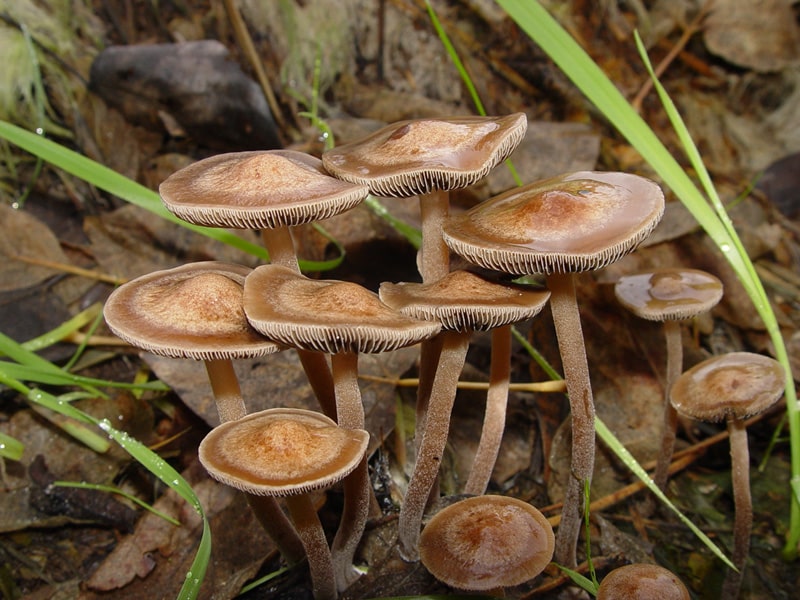
Panaeolus cinctulus Magic Mushrooms
Panaeolus cinctulus: Background
Panaeolus cinctulus magic mushrooms (aka Panaeolus subbalteatus) earned the name "Weed Panaeolus" in the early 1900's due to the fact that mushroom farmers had to weed it out from beds of Agaricus bisporus (commercially grown for grocery stores) because of it's hallucinogenic properties.
Panaeolus cinctulus: Habitat
Panaeolus cinctulus is a very common species of mushroom, growing solitary, gregariously, or densely clumped on compost piles, well-fertilized lawns/gardens, and rarely on horse dung during spring to fall, especially abundant growth after rainfall. This species is said to have cosmopolitan distribution, meaning it practically can be found all over the world, including in Africa, Austria, Australia, Belgium, Canada, The Czech Republic, Denmark, Finland, France, Germany, Great Britain, Guadeloupe, Estonia, Iceland, India, Ireland, Italy, South Korea, Japan, Mexico, New Guinea, New Zealand, Norway, Philippines, Russia, Slovenia, South America, and the United States (according to American mycologist David Arora, Panaeolus cinctulus is the most common psilocybin mushroom in California.). Panaeolus cinctulus magic mushrooms are considered the most widely distributed in the world and is probably the most important psychoactive species in the genus Panaeolus in Europe. Found in all 50 states and in most countries.
Panaeolus cinctulus can be easily confused with other species of psilocybin mushrooms. They have a resemblance to Panaeolus fimicola, and prefer the same habitats, but the latter species has sulphidia on the gill faces.
Panaeolus cinctulus: Taxonomy/Naming
Genera
Panaeolus
Species Name
cinctulus
Sub Species
cinctulus
Common Name
Banded mottlegill, Weed Panaeolus or Subbs
Panaeolus cinctulus: Physical Description
Pileas
The cap of this mushroom is hemispherical to convex when young, becoming planar sometimes with an umbo. Cinnamon brown when moist and black when wet.
Gills
Gills are crowded and cream coloured with a white edge, becoming black when fully mature. Broadly to narrowly attached to the stem.
Spore Print
Jet black
Spores
Jet black
Stipe
equally sized stems that range from white to reddish-brown and are hollow. Forms no veil and may stain blue.

Comments